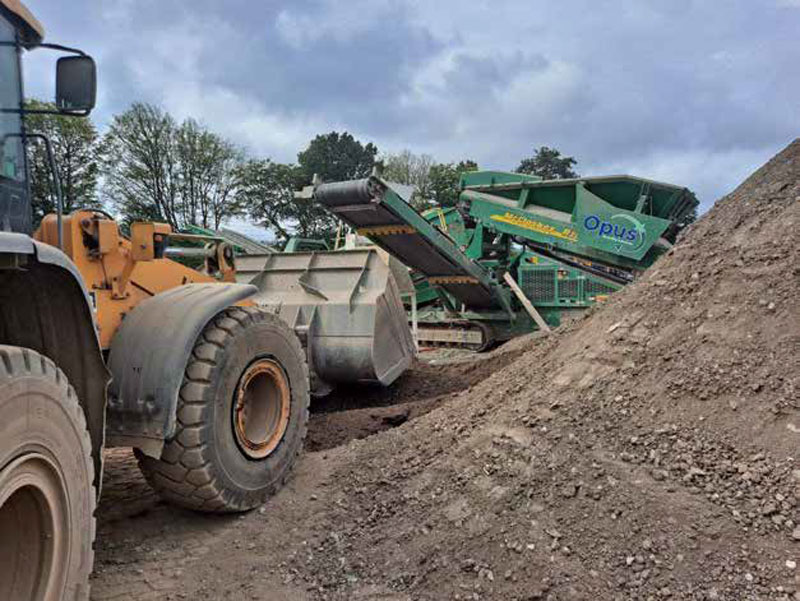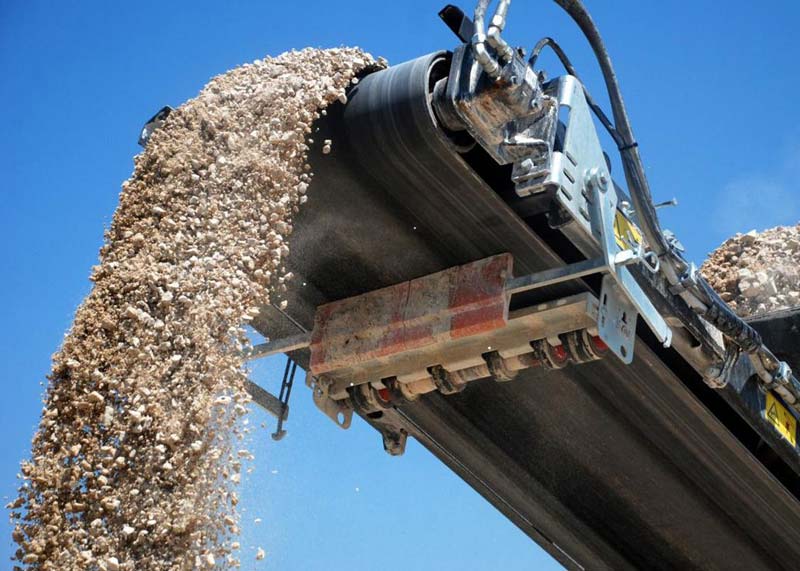Background
Opus Recycling Solutions Limited has significantly invested in an on-site recycling plant which can provide a vast range of aggregates for both utilities and construction contractors, all our recycled products are of the highest quality and fully certified.
The site is based at Former Kenyon Railway Junction, South Of Wilton Lane, Nr Culcheth, Warrington, Cheshire WA3 4BD.
Whether you need to offload waste or have aggregate requirements for construction or utilities the Opus Recycling Solutions state-of-the-art facility offers both a cost-effective and environmentally friendly solution.

Ecobind NFSMR
Since June 2023 Opus Recycling Solutions has implemented the production of Ecobind SMR at the state-of-the-Art Recycling Facility based in Culcheth.
This has allowed Opus Recycling Solutions to increase their recovery rates and dramatically reduce their Carbon Emissions on utility waste by up to 80%+. This far exceeds traditional recycling recovery rates which only achieve 30% to 40% recovery rates on Utility waste trench arisings.
For the months of June and July Opus Recycling Solutions has achieved the following sustainability figures from the implementation of Ecobind into the Recycling Process:
Table 01: Waste Recovery Sustainability Figures June & July 2023
| Factor | Unit |
|---|---|
| Tonnes of Utility Waste Arisings tipped | 3,500 tonnes |
| Ecobind NFSMR produced | 2,000 tonnes |
| Recycled Type 1 803 produced | 1,172 tonnes |
| Recycled Fines produced | 850 tonnes |
| Recovery Rate with Ecobind NFSMR | 100% |
| Recovery Rate without Ecobind NFSMR | 57.77% |
Table 02: Air Emissions Figures June & July 2023
| Factor | Primary Aggregate | Recycled Aggregate | Ecobind |
|---|---|---|---|
| Material Export for Disposal (tonnes) | 3501.00 | 1479.00 | 0 |
| Lorry Movement | 233.40 | 98.60 | 0 |
| Carbon Emissions (Tonnes) | 3.40 | 1.44 | 0 |
| PM10 (Grams) | 71.84 | 30.35 | 0 |
| Nitrogen Oxide (Kg) | 6.37 | 2.69 | 0 |
Table 03: Air Emissions Comparison
| Factor | Primary Aggregate % | Recycled Aggregate % | Ecobind % |
|---|---|---|---|
| Diversion from Landfill | 0.00 | 58 | 100 |
| Lorry Movement Reduction | 0.00 | 58 | 100 |
| Carbon Emissions Savings | 0.00 | 58 | 100 |
| PM10 (Grams) | 0.00 | 58 | 100 |
| Nitrogen Oxide (Kg) | 0.00 | 58 | 100 |
Analysis & Summary
Table 03 compares the Air Emissions detailed in table 02 as percentages. Therefore:

Conclusion
By the introduction of Ecobind SMR and HBM into the Opus Recycling Solution process a 100% reduction in CO2, PM10 and NOx emissions is achieved.
The Emission reductions achieved by Opus Recycling Solutions Ltd also meets the UK decarbonisation objectives. It is noted that the UK construction Sector needs to decarbonise more urgently:
‘The UK Construction Sector should decarbonise more urgently in line with national emission reduction targets of 68% by 2030 and 78% by 2035, according to a report published today by the National Engineering Policy Centre, a Partnership of 43 of the UK’3 professional engineering organisations led by the Royal Academy of Engineering’.
Royal Academy of Engineering